
The selection of aftermarket parts for even the most marginally popular rifles and handguns is one of the best things about the firearms industry in 2019. Want to customize the rear slide plate on your Kahr? No problem. How about an enhanced trigger for your FNS Compact? Yep. A chainsaw attachment for your AR-15? Believe it or not, that’s a thing that exists.
The latest in the aftermarket revolution comes from Magpul. No stranger to the firearm accessories scene, the high-tech polymer company recently released a version of their Hunter stock tailored for the Ruger American rifle.
Magpul designed the first iterations of the Hunter for the Ruger 10/22 and the Remington 700, and both remain among the most popular stocks on the market. If you’re looking for an aftermarket stock that allows for adjustability and enhances durability (without breaking the bank), look no further than the Ruger American Hunter from Magpul.

Features
- Compatible with Ruger American® short action rifles*
- Bolt Action Magazine Well – Hunter American & PMAG 5 7.62 AC included for reliable detachable box magazine compatibility
- Reinforced polymer construction with Type III Hard anodized, machine-finished cast aluminum bedding block
- High strength steel recoil lugs
- Compatible with barrel profiles up to medium Palma
- Fully adjustable length of pull
- Push-button QD swivel compatibility in rear with optional Sling Mount Kits
- M-LOK slots on forend sides and bottom for a wide variety of accessory and sling mounting options
- Optional 0.00″, 0.50″, and 0.75″ Cheek Risers available to adjust cheek weld (Stock comes pre-fitted with 0.25″ Riser)
- M-LOK compatible for additional accessories
* NOTE: PMAG 5 7.62 AC magazine is for the 308 Winchester and similar sized cartridges. Rifles that use smaller or larger cartridge cases will require the customer to separately purchase an AICS pattern compatible magazine of their choice.
Installation
As with all Magpul products, the Hunter is user-friendly. Installation requires nothing more than a torque wrench, the proper bit, a socket wrench, and ten minutes of your time.
The first step is to remove the barreled action from the factory Ruger stock. The user’s manual recommends 65 inch-pounds of torque on the action screws, so they should be tight. It’s nothing a socket wrench can’t handle, but if you find your screws aren’t snug, you might have just discovered one of the reasons for your rifle’s sub-par accuracy.
A padded gun vise is ideal for this kind of job, but it’s not necessary.
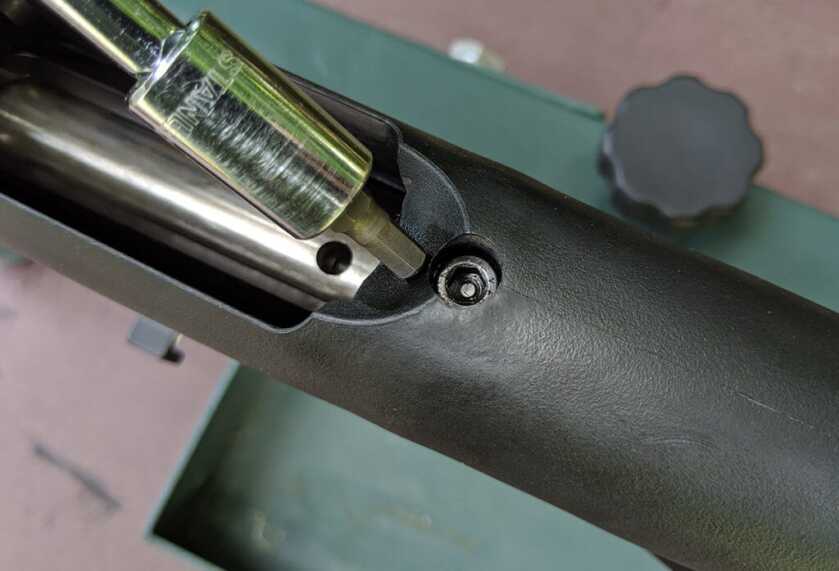
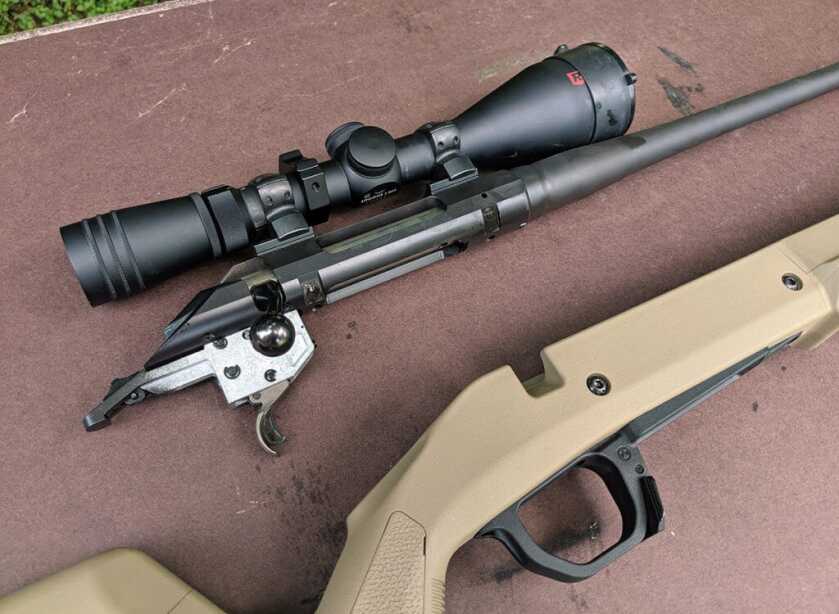
Once you have the barreled action out of the factory stock, you’ll need to remove the trigger guard from the Magpul stock by pinching each side and pulling it out.
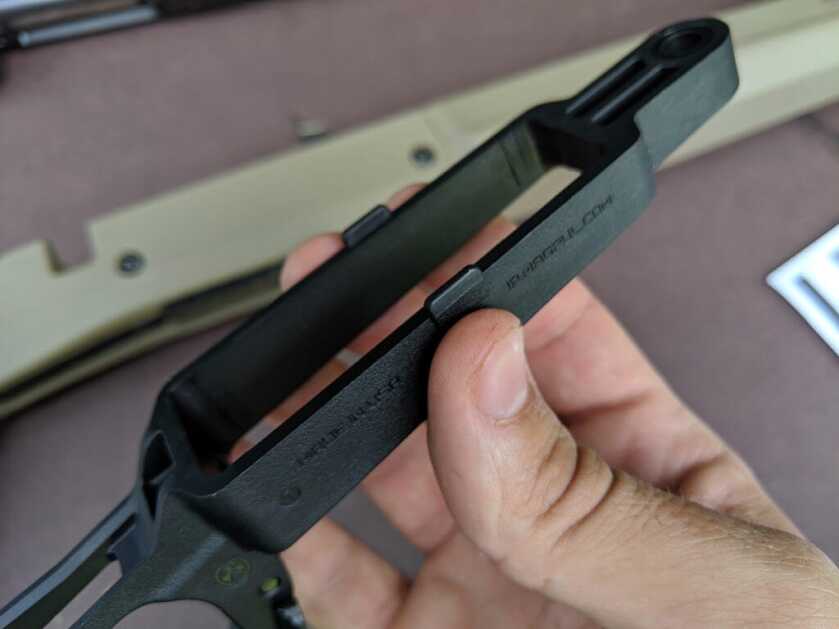
Next, place the two steel recoil lugs in the notches cut into the aluminum bedding block. The lugs are identical, so they can go in either slot; just make sure to place them so they make a “U” shape rather than a bridge.

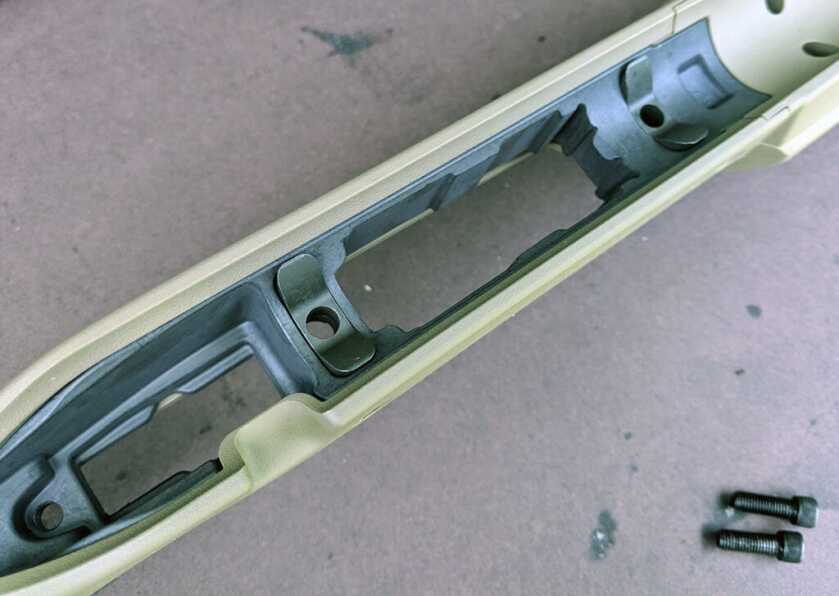
I didn’t run into any trouble sliding the barreled action into place. When I built a 10/22 last year with the Hunter, I had a tough time getting the action into the stock. It was a tight squeeze, caused in part by the way Ruger designed 10/22’s with the trigger guard attached to the receiver. I didn’t have similar trouble with the American Hunter assembly, and I soon had the action screws threaded and ready to tighten.
A quick note on the action screws: be sure to use the screws Magpul provides, not the factory screws from Ruger. The Ruger screws are longer, and if you use them, they’ll run up against the bolt and impede movement. I found this out the hard way, so… you’re welcome.
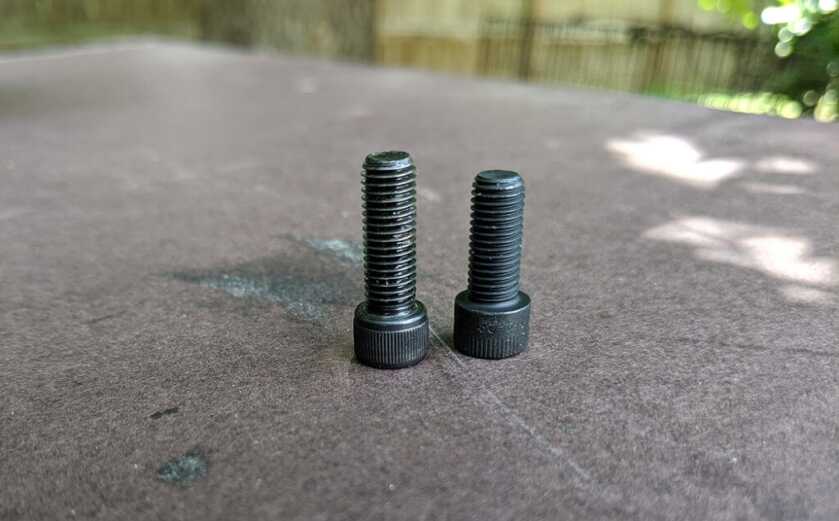
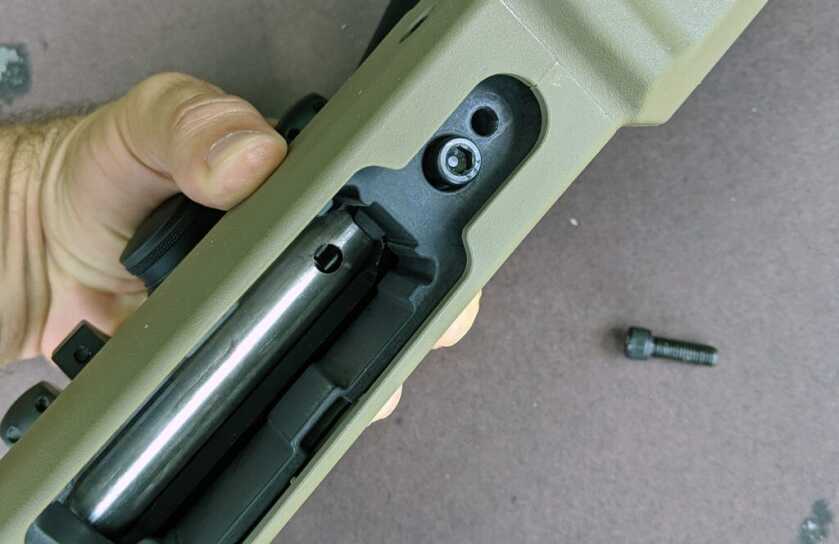
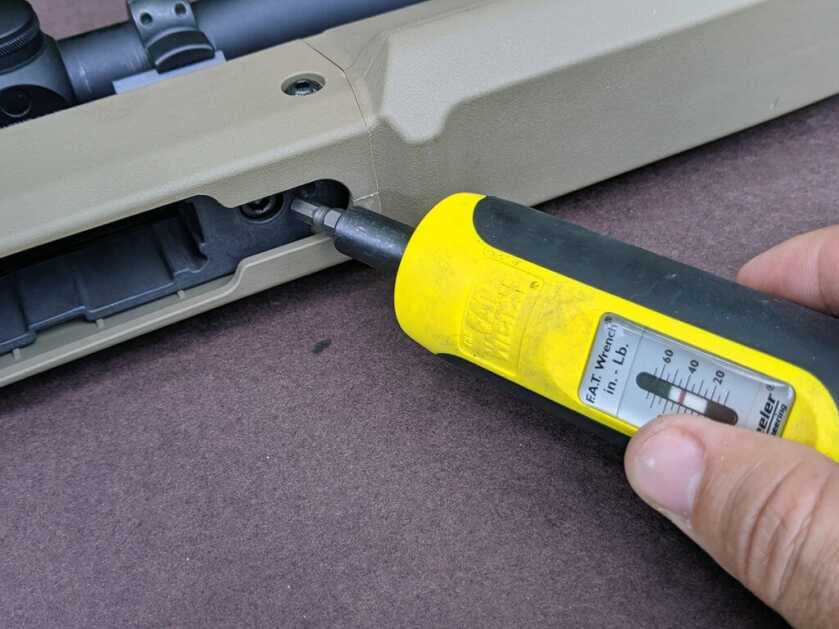
Magpul recommends tightening the action screws to 65 inch-pounds, alternating between the two screws every five pounds or so. The instructions don’t mention which screw to start or end with, and neither does Ruger in the American user’s manual. As long as you don’t tighten one screw all the way and then the other, you’re good to go.
The last step is to attach the trigger guard, which is secured by two tabs as well as two additional screws.
Features + Enhancements
So, what are you getting for $299.95? Durability and ergonomics are at the top of the list.

Turns out, all plastic is not created equal, and Magpul constructed the Hunter with polymer noticeably thicker and more rugged than the Tupperware factory stock. While all plastic stocks are immune to the weather-related ailments that plague traditional wood stocks, the Hunter’s solid construction provides additional assurance in the field. Also, unlike the factory stock, there isn’t any flex in the forend of the Hunter, and I wasn’t able to squeeze the barrel and the stock together.
That durability does come with one drawback: weight. The Hunter weighs 3lbs, 7.6 oz. while the factory stock weighs 1 lb., 8.1 oz., so you’re adding about two pounds switching to the Magpul. This was disappointing since, to me, the American’s lightweight was one of the rifle’s most attractive selling points. But every firearm comes with trade-offs, and the overall weight (unloaded, with scope) is still under 9.5 lbs.

Ergonomics is the second major improvement over the factory stock. The Hunter comes with spacers to adjust the length of pull between 13” and 15,” so you can tweak the LOP to fit your shooting position and scope. The spacers are inserted easily by unscrewing the screws in the recoil pad, removing the recoil pad slider, and inserting the desired number of sliders.
I was disappointed to learn that Magpul only includes the 0.25” cheek riser in the Hunter package. The company sells 0.00”, 0.50”, and 0.75” risers separately for $15.95, so users can adjust the comb height if necessary. But for $300 it seems like Magpul could pony up and include three extra pieces of plastic to allow users to get their cheek weld just right. Still, the 0.25” riser is better than the factory stock, and my scope happened to be about the right height.
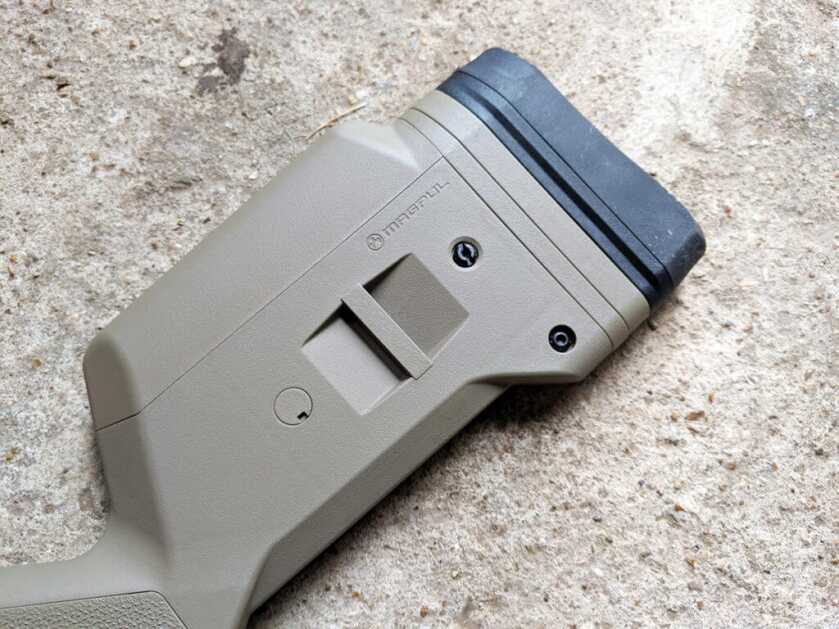
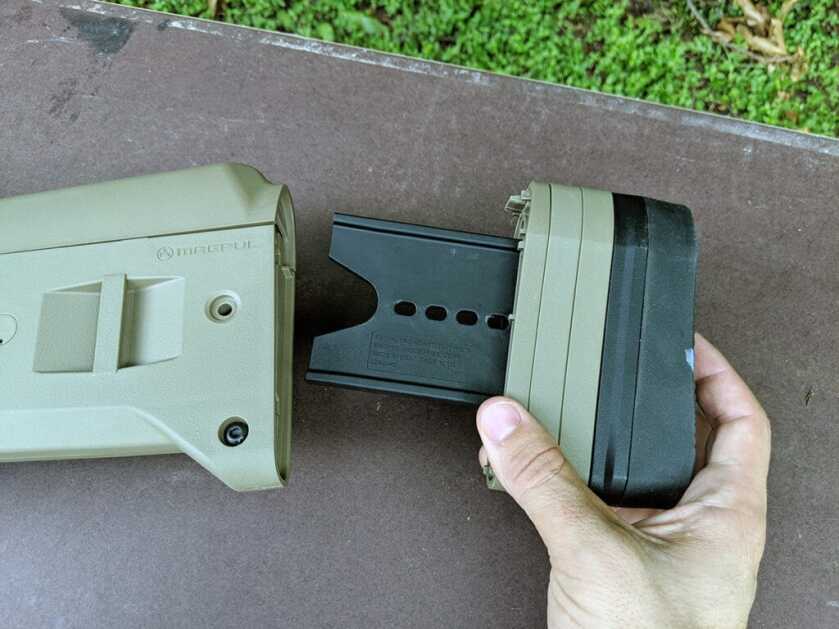
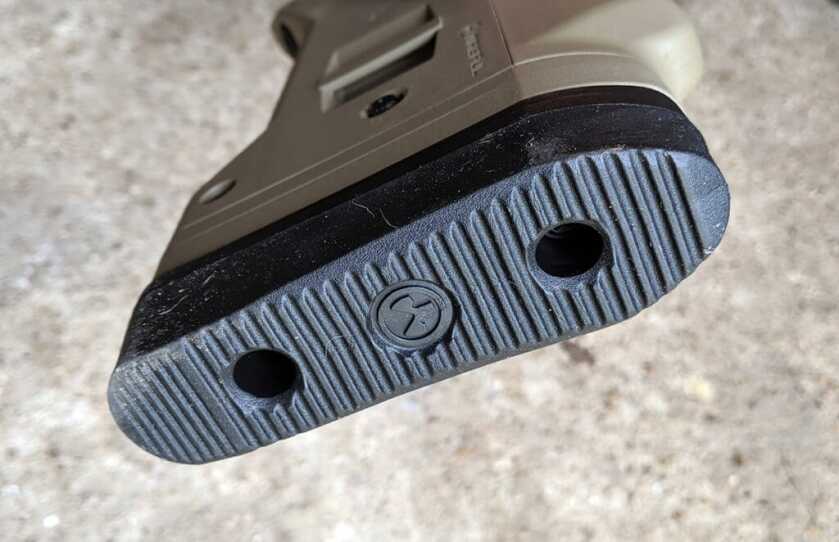
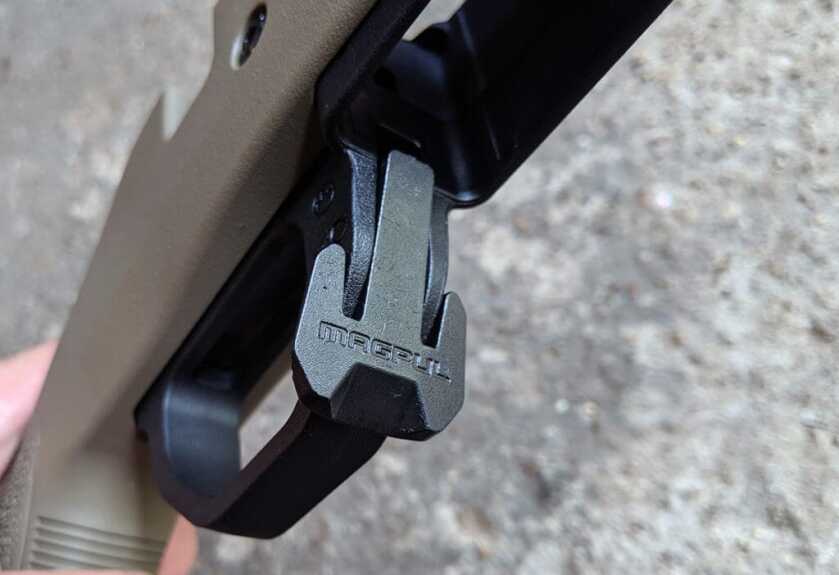

The grip is nicely textured and molded at a steeper angle than the factory stock, and the wide forend accepts M-Lok accessories. I think the width of the forend looks a little odd with my standard American barrel, but that’s a personal preference.
The high-strength steel recoil lugs paired with the Type III hard-anodized cast aluminum bedding block free float barrels with profiles up to medium Palma. The system is obviously more secure than the aluminum recoil lugs that come with the factory stock, which, in theory, will enhance accuracy.
Unfortunately, I didn’t find that to be the case with my rifle. I’ve used and tested the Hunter with both factory loads and hand loads, and I’ve seen a slight reduction in group sizes, but it’s nothing to write home about. You might have a different experience, and the rigidity of the Hunter system certainly won’t decrease accuracy. But I’ve found that a rifle’s barrel determines accuracy more than any other factor, so you shouldn’t expect a 1.5 MOA gun to start shooting sub-MOA with a different stock.
That being said, the Hunter includes a host of features that justify its cost. Greater durability, enhanced ergonomics, detachable magazine capability, and M-Lok mounts all provide significant upgrades over the factory stock. It’s simple to install and the mounting system ensures a true free-floated barrel that sits securely in the bedding block. In today’s accessory-rich environment, the Magpul Hunter stands out as a viable option to enhance your hunting rig, and I think it’s worth a look.
Visit Magpul to learn more.

I bought the stock for my 6.5 grendel hunter.. didn’t realize that I’ll need a different mag.. trying to find one has been difficult.
I love the Magpul stocks on my Ruger 10-22 and Remington 700. Now I can’t wait to put one on my Ruger American in .243.
This looks great. Ruger and Magpul are a great combination.
I have a Magpul Backpacker stock on my Ruger 10/22 Takedown and it is amazing. Now I’m just waiting for them to offer the same backpacker takedown stock for the Ruger PCC. In fact I have 4 buddies with Ruger PCCs that are waiting for Magpul to come out with it (if it’s actually a thing).
Thanks Jordan ! Not a bad looking set up. Have a couple Americans and looking at stocks now. I like the “weatherproof” aspect. Good article.
Thanks! Yeah, they’re solid stocks. Definitely heavier than the factory stock, but more durable.